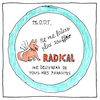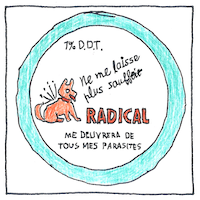Paul Hermann Müller
chemistry

|
DDT
Kills bugs that spread disease. Thought to be harmless to humans. Saves lives. Kills lice carrying typhus. Kills mosquitoes carrying malaria. Even kills flies. Müller discovered its insecticidal properties in 1939 and got the Nobel prize.
Silent killer
dichlorodiphenyltrichloroethane persists in the environment accumulates in predators more in predators of predators toxic to marine animals weakens the eggshells of birds linked to miscarriages linked to diabetes and cancer
Imbalance
Could using DDT have been worth the cancers worth the miscarriages the near collapse of bird species for all the misery it prevented miseries and deaths soldiers free of typhus and malaria free from miseries and death children in India and Africa free from black fever and death?



In 1874, Othmar Zeidler first synthesized DDT, dichlorodiphenyltrichloroethane, that is, 1,1,1-trichloro-2,2-bis(4-chlorophenyl)ethane, but Zeidler had not investigated its properties. Müller spent four years testing 349 compounds before he tested DDT.
Mosquitos infect over a quarter-billion people in South America, Asia, and Africa with malaria each year, and over a half-million die of it.
The parasite responsible for visceral leishmaniasis (black fever) attacks the internal organs and infects a half-million people each year. If untreated, it usually results in death. DDT is still used to control the sandfly whose larva carry this parasite.
See also in The book of science:
Readings in wikipedia:
Other reading: